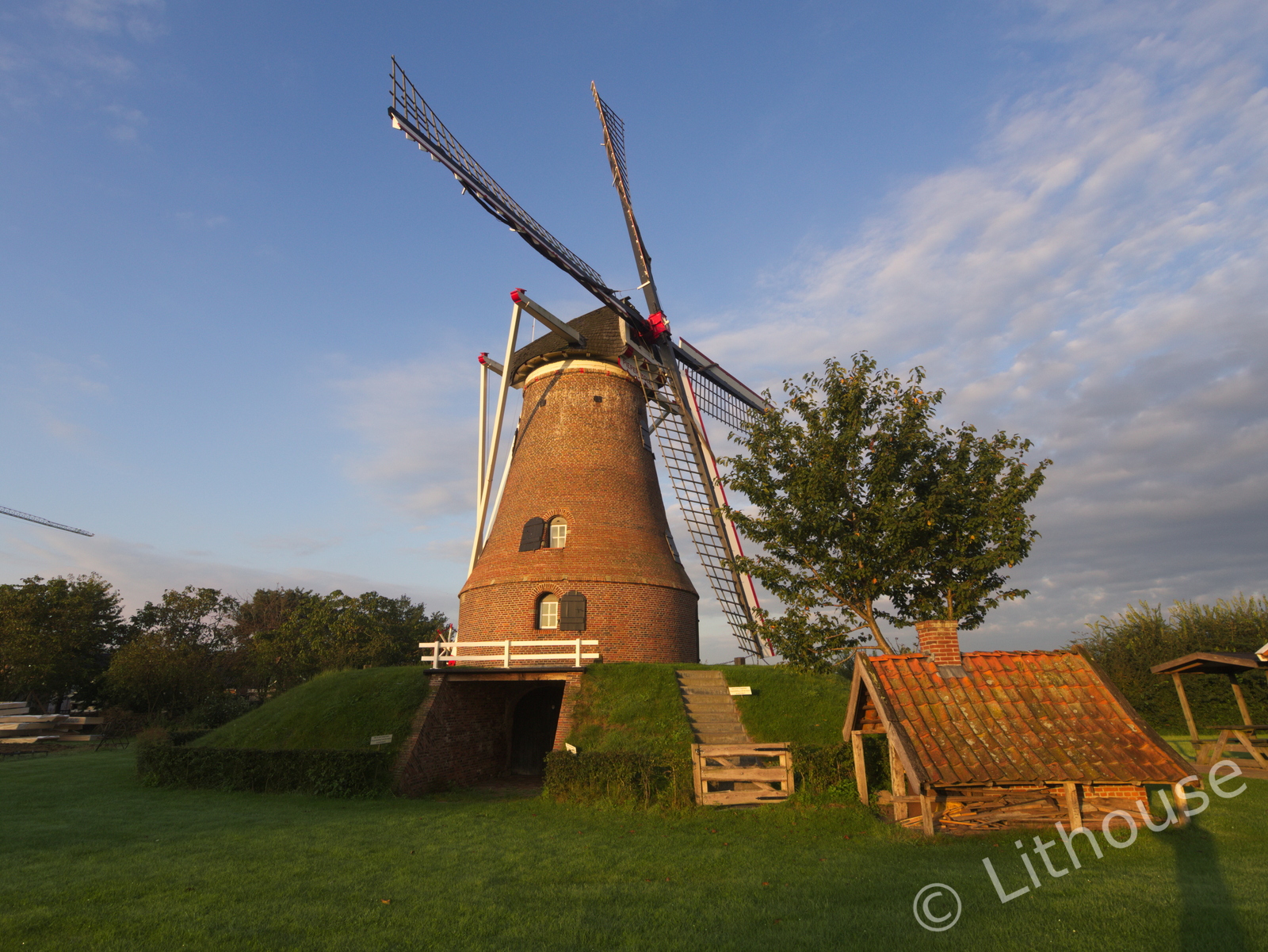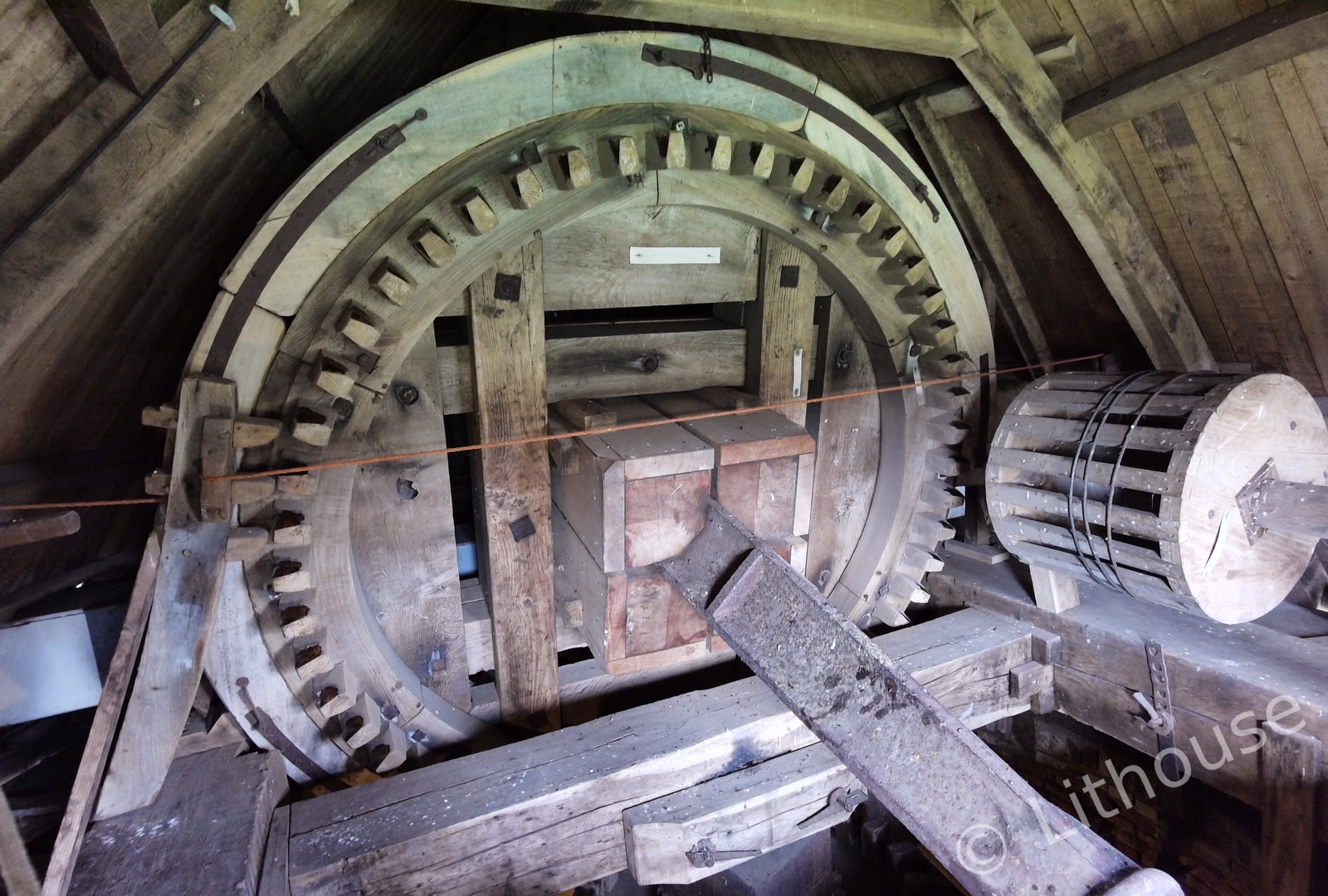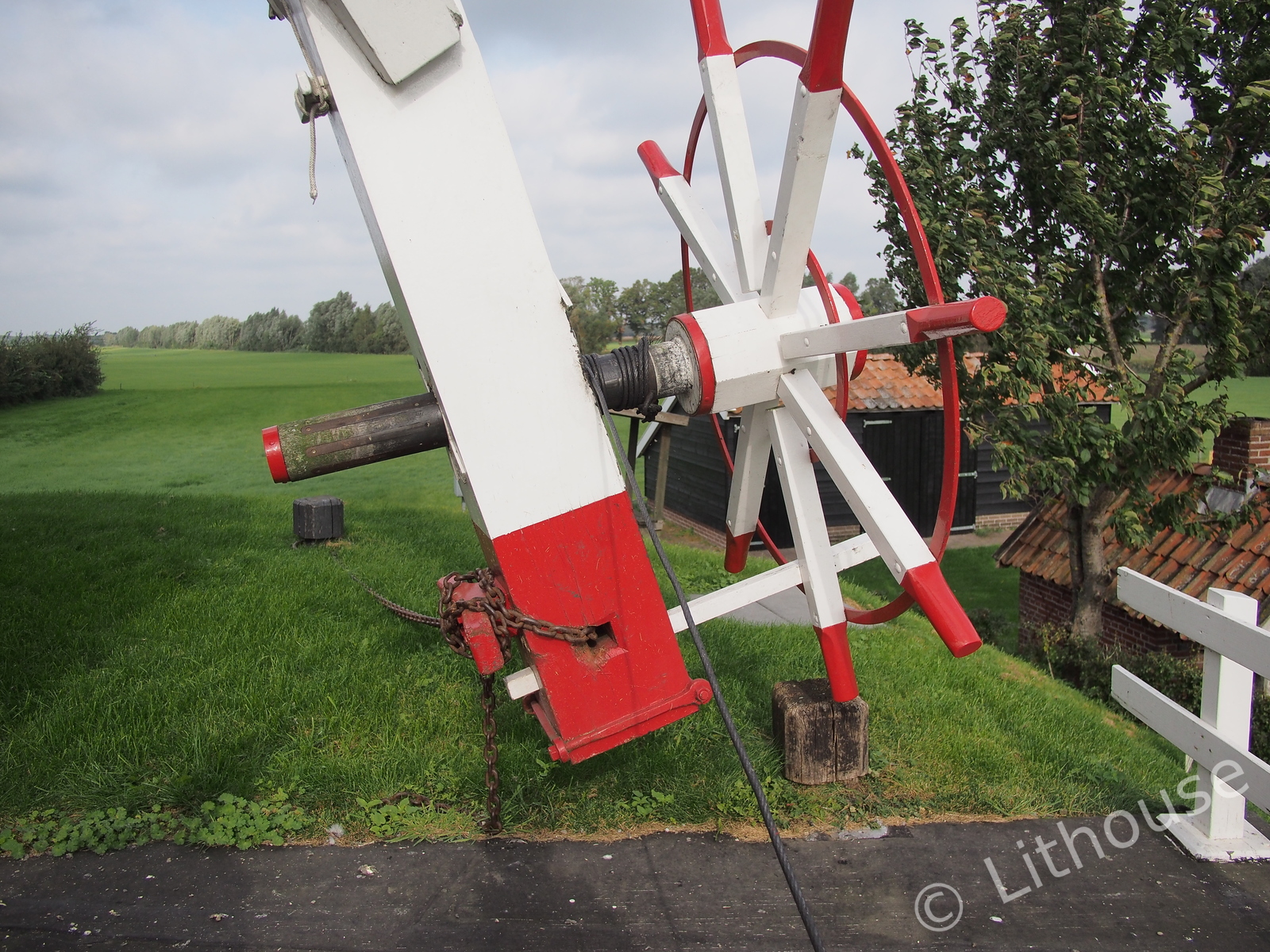Wooden windmills and prime numbers

One of our clients is also windmill operator. Windmill as in: old fashioned monumental wooden windmill from the 18th century. In The Netherlands these windmills were used for two purposes:
- pump water out of the country
- industrial production: sawing wood, milling corns.
On the inside these windmills are made from wood, everything is wood, and so we are interested.
A wooden windmill looks like a simple wooden machine, but look a little closer and it is full of smart design. In this post we focus on the gear system. The gear system is made from wooden cogwheels. You would expect a wooden cogwheel to last a week, or a month maybe. But no, they last for 80 years. Eighty years for a wooden gearbox, we bet your Volvo gearbox doesn’t last that long!
One of the key design tricks that make them last that long is in the number of cogs on the cogwheels. A simple example can explain. Let’s say we have two cogwheels B(ig) and S(mall). Cogwheel B has 80 cogs, and cogwheel S has 20 cogs. The gearbox ratio is 1 on 4, so if B makes 1 rotations, then S makes 4 rotations. Simple math.
But with 80 and 20 cogs, the same individual cogs will meet each other regularly. Cog S1 (the first cog on S) will meet cog B1, then on the next rotation it meets B21, then B41, then B61 and then B1 again. So S1 and B1 keep meeting all the time, at every full rotation of B.
And that is a problem, because if they meet too often they will start wearing in on each other, and that results in higher wear and a shorter life of the gear system. For a longer life, B1 and S1 should meet with the lowest frequency possible. How to do that?
Prime numbers. We redesign B and give it 79 cogs, and S we redesign to 19 cogs. The gear ratio is 4,16 instead of 4, that’s ok, and now B1 and S1 only meet after 19 full rotations of B (instead of 1) or 79 full rotations of S, and the chances of two cogs wearing in on each other is much lower.
This prime number trick is just one aspect of gearbox design. Gearbox design is a special trade. For more, take a look at this wikipedia-page.




